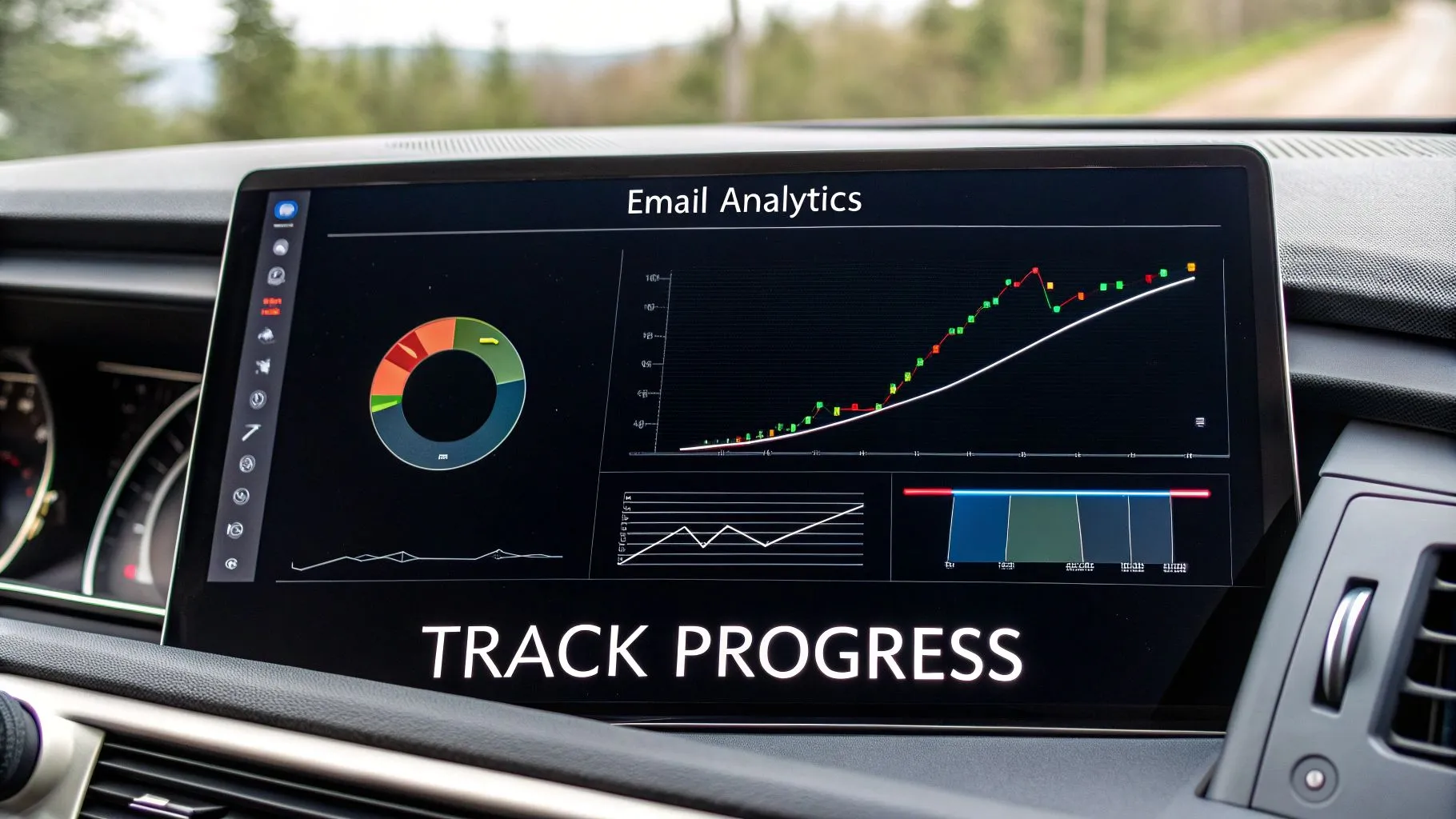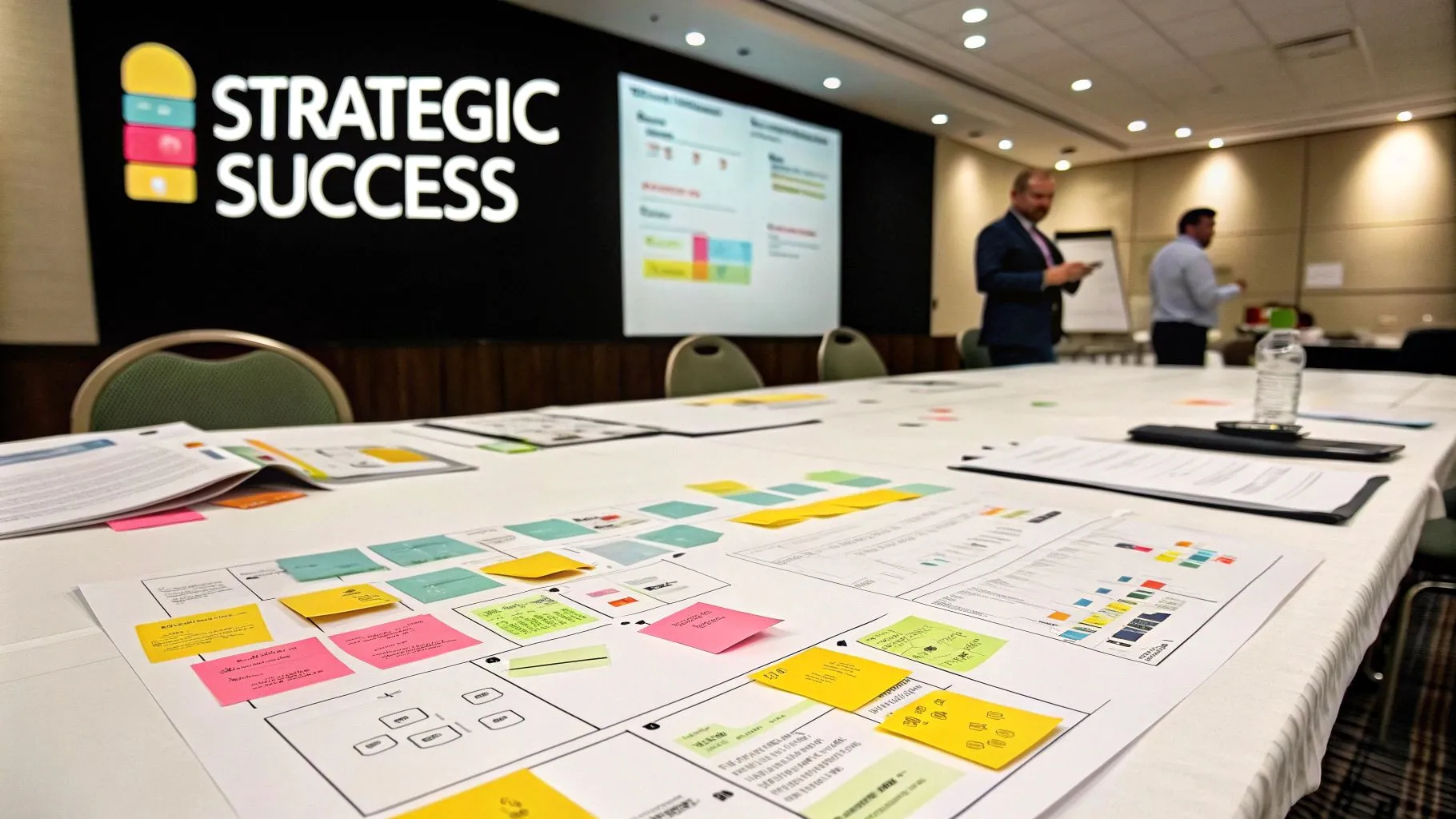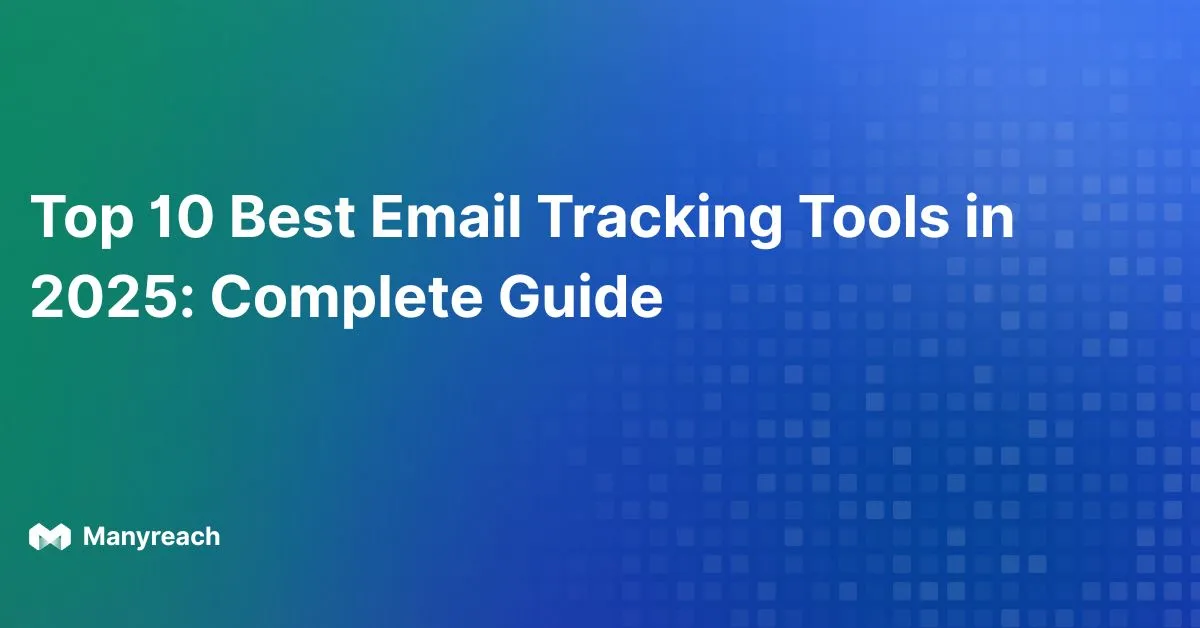Email Warm Up: The Ultimate Guide to Boosting Your Inbox Placement

Introduction to Email Warm Up

Imagine walking into a party where you know absolutely no one. Your best approach wouldn't be to barge in and start making announcements. Instead, you'd likely try to introduce yourself gradually, engaging in conversations and building connections. Email warm up follows a similar principle. It's the process of gradually building a positive sender reputation with Email Service Providers (ESPs) like Gmail, Outlook, and Yahoo. This involves slowly increasing the volume of emails sent from a new or inactive email address to establish trust and, as a result, improve your email deliverability.
This gradual approach is essential because ESPs employ complex algorithms to filter spam. These algorithms analyze numerous factors, including your sending volume, bounce rates, and engagement metrics. This analysis determines whether an email lands safely in the inbox or gets banished to the spam folder. A sudden influx of emails from a new address can easily trigger these filters, hindering your legitimate messages from reaching their intended recipients. That's precisely where email warm up plays a vital role.
The Importance of Sender Reputation
Email warm up is the cornerstone of a strong sender reputation. Think of your sender reputation as a credit score for your email address. A high score demonstrates trustworthiness, resulting in improved deliverability. Conversely, a low score suggests potential spam activity, often leading to emails being flagged or blocked. For instance, consistently sending emails to invalid addresses, resulting in high bounce rates, will undoubtedly damage your sender reputation. This, in turn, affects how ESPs treat your future emails.
How Email Warm Up Improves Deliverability
Through gradually increasing sending volume and maintaining positive engagement metrics, email warm up demonstrably improves deliverability. This process essentially trains ESPs to recognize your emails as legitimate and valuable to recipients. It's like building a rapport with the gatekeepers of the inbox. When ESPs observe consistent positive signals, such as high open rates and low spam complaints, they are much more likely to deliver your emails to the inbox. Furthermore, email warm up helps you avoid the dreaded spam folder, ensuring your target audience actually sees and engages with your messages. This, coupled with consistently engaging content, contributes significantly to a successful email marketing strategy. Neglecting to warm up your emails, however, can be detrimental to your campaigns, impacting their reach and ultimately hindering your desired outcomes. This leads us to the common challenges faced during email warm up.
Common Email Warm Up Challenges
While email warm up offers significant benefits for reaching your audience, it's not always a straightforward process. Several challenges can arise, and understanding these hurdles is the first step towards navigating them effectively. This knowledge is crucial for ensuring your emails consistently land in the inbox.
Spam Filters: The Gatekeepers of the Inbox
One of the most common challenges is triggering spam filters. These filters act as gatekeepers, protecting users from unwanted emails, but they can sometimes mistakenly categorize legitimate emails as spam. Sending a large volume of emails from a new or cold email address can raise red flags, particularly if your sending patterns deviate from established norms. For example, suddenly sending hundreds of emails after a long period of inactivity can appear suspicious. Consequently, your emails might be diverted to the spam folder, significantly reducing your reach. This emphasizes the need for careful monitoring and adjustment throughout your warm-up strategy.
Low Engagement: A Sign of Trouble
Another frequent challenge is consistently low engagement during the warm-up period. Low open and click-through rates signal to ESPs that your emails aren't resonating with recipients. This can negatively impact your sender reputation and further hinder deliverability. It’s similar to giving a presentation to a disengaged audience; their lack of interaction speaks volumes. However, sending targeted, valuable content to a clean, opted-in list can foster consistent engagement. This positive engagement, in turn, assures ESPs that your emails are worth delivering.
Technical Issues: Ensuring Smooth Operation
Technical issues can also disrupt the warm-up process. Incorrect DNS settings or authentication protocols can trigger spam filters or cause emails to bounce. This is comparable to a faulty sound system during a presentation, preventing your message from being clearly heard. Furthermore, using a shared IP address with senders who have poor reputations can negatively affect your own deliverability, even during the warm-up phase. Therefore, meticulous technical setup and ongoing maintenance are crucial for a successful warm-up. Regularly checking your DNS records and choosing a reputable email service provider are essential steps in avoiding these pitfalls.
Step-by-Step Warm Up Process
Having explored the importance and challenges of email warm up, let's now outline the practical steps involved. This step-by-step guide will provide a clear roadmap to successfully warm up your email and achieve optimal deliverability.
Phase 1: Starting Slow and Steady
The initial phase of email warm up centers on establishing a consistent sending pattern. Begin with a very low sending volume, typically around 10-20 emails per day. This is similar to introducing a new plant to a different environment – you wouldn't immediately expose it to intense sunlight. Gradually acclimate your email address to sending emails, avoiding sudden spikes in volume that could trigger spam filters. This initial phase is paramount for building a foundation of trust with ESPs.
As an example, if using a new email address, start by sending emails to colleagues, friends, or family. This creates a base of engaged recipients who are likely to open and interact with your messages. This early engagement sends positive signals to ESPs, strengthening your sender reputation from the start. Maintaining a regular sending schedule, even if it's just a few emails per day, reinforces this consistency.
Phase 2: Gradually Increasing Volume
After establishing a consistent sending pattern for a week or two, you can gradually increase your email volume. Increase the number of emails sent each day by a small percentage, such as 10-20%, every few days. This gradual increase avoids overwhelming ESPs and allows you to closely monitor your email performance. Think of it like gradually increasing the weight you lift at the gym – a steady progression prevents injury.
As your sending volume increases, diversify your recipients. Begin including contacts from your target audience, ensuring they have opted in to receive your emails. This gradual introduction helps gauge their engagement and further refine your email content, maintaining a healthy balance of engaged recipients, crucial for continued warm-up success.
Phase 3: Maintaining and Monitoring
The final phase revolves around maintaining consistency and actively monitoring your email performance. Continue sending emails regularly, gradually increasing volume until you reach your desired sending capacity. This ongoing activity maintains the momentum you've built.
However, monitoring is equally important. Regularly check your email metrics, including open rates, click-through rates, bounce rates, and spam complaints. These metrics offer valuable insights into how your emails are performing and allow you to identify any potential issues early. A sudden increase in bounce rates, for example, might indicate a problem with your email list or technical setup. Addressing these issues promptly is essential for maintaining a strong sender reputation and ensuring continued deliverability. This proactive approach to monitoring and maintenance is key for long-term email marketing success. Tools like Manyreach can significantly streamline this process, automating the email warm-up process and providing detailed analytics to track your progress. This allows you to focus on creating compelling content and engaging with your audience.
Monitoring and Analytics

Just as a gardener monitors plant growth, diligently observing for signs of health and adjusting care accordingly, you must monitor your email warm-up progress. Tracking key metrics and using analytics tools ensures your efforts are yielding positive results. This proactive approach helps identify potential issues early and allows you to optimize your strategy for maximum effectiveness.
Key Metrics to Track During Email Warm Up
Several key performance indicators (KPIs) offer crucial insights into your email warm-up performance. Tracking these metrics enables you to fine-tune your approach and stay ahead of potential deliverability issues.
- Delivery Rates: This metric represents the percentage of emails successfully delivered to recipients' inboxes. A high delivery rate suggests a healthy email warm-up process, but it's not the only factor to consider.
- Open Rates: Open rates track the percentage of recipients who open your emails. Low open rates can indicate issues with your subject lines, sending times, or the relevance of your email content. Consistently low open rates, for instance, might suggest revisiting your subject line strategy.
- Click-Through Rates: This measures the percentage of recipients who click on links within your emails. Low click-through rates might suggest a need to improve your call to action or the value proposition within your content, making it more engaging and compelling.
- Bounce Rates: Bounce rates represent the percentage of emails returned to the sender due to delivery failure. High bounce rates can signal problems with your email list hygiene or technical issues. A sudden spike, for instance, could indicate a problem with your email list or technical setup.
- Spam Complaints: This metric tracks the number of recipients who mark your emails as spam. High spam complaint rates are a serious concern and can severely damage your sender reputation. This emphasizes the importance of sending relevant content to an opted-in list.
Utilizing Analytics Tools
Various analytics tools can simplify the monitoring process and provide valuable insights into your email warm-up performance. These tools automate data collection and visualization, making it easier to spot trends and make informed decisions.
Manyreach, for example, offers robust analytics dashboards specifically designed for email warm up. It tracks all the key metrics mentioned above, presenting a clear overview of your progress. Furthermore, Manyreach provides insights into how different email providers respond to your emails, enabling you to tailor your strategy accordingly. This granular data allows for a more refined strategy, ensuring your emails consistently reach the inbox. By leveraging the power of analytics, you can navigate the intricacies of email warm up and pave the way for successful email campaigns.
Advanced Warm Up Strategies

Beyond the foundational steps of email warm up, several advanced strategies can further optimize the process. These techniques go beyond the basics to enhance deliverability and maximize your email marketing ROI. Think of it like fine-tuning a musical instrument after the initial tuning; it brings out the best possible sound.
Segmentation and Targeted Warm Up
Similar to a chef preparing different dishes for various palates, segmenting your audience and customizing your email warm-up strategy can significantly improve results. Instead of a one-size-fits-all approach, segment your audience based on factors like engagement history, demographics, or purchase behavior. This allows for more relevant emails, increasing engagement and sending positive signals to ESPs. For example, a highly engaged segment can be warmed up more aggressively, while a newer segment might benefit from a slower, more cautious approach.
Content Optimization for Engagement
The content of your emails is paramount in the warm-up process. Sending engaging and valuable content keeps recipients interested and wanting more, just like a captivating party. Ensure your emails provide genuine value, such as informative articles, exclusive discounts, or personalized recommendations. Valuable content increases the likelihood of positive engagement, strengthening your sender reputation during warm up. Consider incorporating interactive elements like polls or surveys to further boost engagement and gather valuable feedback.
A/B Testing for Subject Lines and Content
A/B testing is a powerful technique for optimizing your warm-up process. Much like a scientist conducting experiments, A/B testing allows you to experiment with different subject lines, email content, and sending times to identify what resonates best with your audience. This data-driven approach reveals valuable insights, refining your strategy and improving overall email performance. For example, testing different subject lines can reveal which ones generate the highest open rates, while testing different calls to action can optimize click-through rates. Continuous testing and iteration fine-tune your strategy for optimal results.
Utilizing Email Warm Up Tools like Manyreach
Manually warming up multiple email accounts can be time-consuming and complex. Email warm-up tools like Manyreach automate this process, streamlining your workflow and freeing up your time. Manyreach offers advanced features such as automated sending schedules, personalized content generation, and detailed analytics tracking, simplifying email warm up, even for high-volume senders. It also intelligently monitors your sender reputation and adjusts your sending volume automatically to avoid triggering spam filters. This proactive approach ensures consistent inbox placement, maximizing the effectiveness of your warm-up strategy. By leveraging automation and intelligent monitoring, Manyreach optimizes deliverability and maximizes your email marketing ROI, particularly for businesses scaling their cold email outreach.
Conclusion
Email warm up is more than just a technical process; it's a strategic investment in the long-term health of your email marketing. By gradually building trust with ESPs, you establish a foundation for consistent deliverability and higher engagement. This translates to messages reaching the inbox, being opened, and ultimately driving the desired results.
Key Takeaways for Effective Email Warm Up
- Start Slow and Steady: Begin with a low sending volume and gradually increase it over time, preventing spam filter triggers and allowing ESPs to recognize your legitimacy.
- Prioritize Engagement: Sending engaging, valuable content maintains a positive sender reputation. High open and click-through rates demonstrate the value of your emails to ESPs.
- Monitor and Adjust: Regularly track key metrics like delivery rates, bounce rates, and spam complaints to identify and address potential issues early.
- Leverage Automation: Tools like Manyreach automate the process, saving you time and ensuring adherence to best practices.
Final Thoughts: Warm Up Your Way to Success
Successfully warming up your emails is akin to cultivating a healthy garden. It takes patience, consistent effort, and the right tools. By following the strategies outlined in this article, you can avoid the spam folder, enhance your sender reputation, and maximize the effectiveness of your email marketing campaigns. This leads to more leads, increased conversions, and a greater return on your investment.
Ready to take your email deliverability to the next level? Start your free trial with Manyreach today and experience the power of automated email warm up! https://manyreach.com
.webp)






